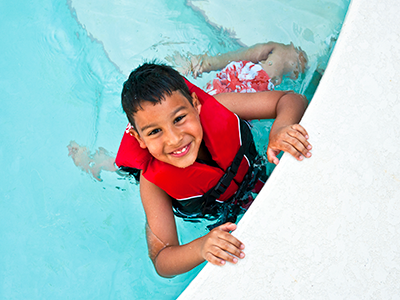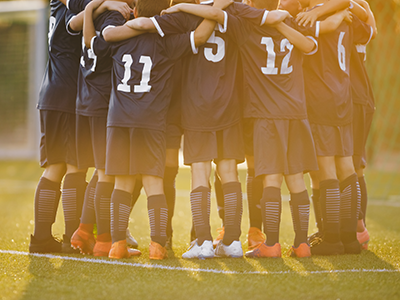Many of us saw NFL player Damar Hamlin collapse and go into cardiac arrest after making a routine tackle during last Monday night’s football game. While we all hope for a speedy recovery, you may be wondering if your child is at risk of cardiac arrest when playing contact sports. Charles Berul, M.D., division chief of Cardiology and co-director of the Children’s National Heart Institute at Children’s National Hospital, breaks down some of the terms you may be hearing about and what you need to know about cardiac arrest in young athletes.
What is the difference between cardiac arrest, heat attack and heart failure?
People often use these terms interchangeably, but they are different.
- Cardiac arrest is typically a sudden arrhythmia or abnormal heart rhythm that causes the heart to not beat normally and can be fatal.
- A heart attack is typically due to abnormal blood flow in the arteries supplying the heart, rather than an electrical issue which causes a cardiac arrest.
- Heart failure is when the heart doesn’t pump as strongly as it should.
All three can lead to the heart not working normally, but for different reasons.
What causes cardiac arrest in young athletes?
Typically, cardiac arrest in young athletes is due to either some underlying susceptibility — an abnormality that hasn’t been detected yet — or just bad luck and bad timing.
Underlying conditions are inherited conditions that make people susceptible to cardiac arrhythmias or abnormal heart rhythms. Sometimes the first person in the family to have the condition is identified because they collapse while playing sports, and then the rest of the family can be screened and evaluated for the condition.
Getting hit with a hard ball, a hockey puck or a helmet can cause a rare condition called commotio cordis, which results from a hard impact to the heart, usually right at the bottom of the chest, and it occurs at a particularly vulnerable time in the heart cycle or heartbeat. It is very rare, and it happens typically in young people — from the age of about 8 to 30, which is also the age when most people are playing hardball sports. There’s no underlying susceptibility, so if somebody has commotio cordis, it doesn’t mean they are susceptible to having it again.
Is commotio cordis common? Should parents worry about their young athlete?
No, commotio cordis is not common. It happens to about 50 young athletes per year, which sounds like a lot, but keep in mind there are millions of young athletes. It shouldn’t impact or limit the way young athletes participate in sports.
What is the immediate reaction or treatment for cardiac arrest?
If a person collapses or experiences sudden loss of consciousness, the American Heart Association recommends immediately starting CPR, as well as calling for help (or calling 911) and using an automated external defibrillator (AED) if one is available.
Are there signs/symptoms to look out for ahead having a cardiac event?
The signs that we worry about are chest pain, palpitations or fainting with exercise. All of these are relatively common symptoms in young adults, but they are more concerning if they happen during exercise or exertion, rather than just after doing something like getting up too fast.
Damar Hamlin’s collapse is a reminder of the importance of knowing CPR in an emergency. Consult the Red Cross website to find a training class near you.
 https://riseandshine.childrensnational.org/wp-content/uploads/2025/06/boy-with-concussion-Feature.jpg
300
400
Danielle Robbins
https://riseandshine.childrensnational.org/wp-content/uploads/2017/11/childrens_riseandshine_logo.jpg
Danielle Robbins2025-06-11 11:47:322025-06-11 11:47:32Concussions in Autistic children
https://riseandshine.childrensnational.org/wp-content/uploads/2025/06/boy-with-concussion-Feature.jpg
300
400
Danielle Robbins
https://riseandshine.childrensnational.org/wp-content/uploads/2017/11/childrens_riseandshine_logo.jpg
Danielle Robbins2025-06-11 11:47:322025-06-11 11:47:32Concussions in Autistic children














Leave a Comment
Want to join the discussion?Feel free to contribute!